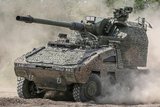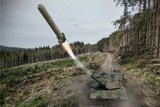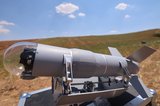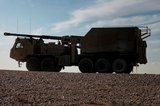Elbit Systems tests new AFV
Elbit Systems has concluded testing of its new Armored Fighting Vehicle (AFV) as part of the Israeli Ministry of Defense’s CARMEL Future Combat Vehicle project.
The AFV applies autonomous capabilities and artificial intelligence to accelerate decision making and facilitate target engagement with increased rapidity and accuracy.
Using a Helmet Mounted Display (HMD) a crew of two operates the AFV under closed hatches, enhancing capabilities and survivability. The system transmits real-time, high resolution video to the crew’s HMD, providing them with a 360° view of the surroundings, together with relevant symbology and C4I data.
The AFV has successfully demonstrated its capacity to function as an independent high fire-power strike cell, as a networked station for multi-spectral sensing and information fusion, as well as a base platform for operating additional unmanned systems.
According to the company, the AFV is capable of performing combat tasks including off road driving, target acquisition and high precision fire missions, in day and night. As the vehicles is networked, it can carry out missions ordered by commanders and other fighting platforms as well as to transmit missions and intelligence to other forces.
Additionally, the AFV is capable of operating other unmanned platforms such as a VTOL to feed intelligence into the crew’s operational picture or a fighting UGV to perform high risk missions.
More from Land Warfare
-
![US Army seeks industry support to prepare acquisitions of Group 4+ UAVs]()
US Army seeks industry support to prepare acquisitions of Group 4+ UAVs
The US Army is keen to hear about vendor designs, strategies and potential hardware and software solutions to inform requirements for procurement efforts.
-
![Dedicated drone munitions could unlock modular mission potential]()
Dedicated drone munitions could unlock modular mission potential
Top attacks have proven effective against heavily armoured vehicles in Ukraine. A new family of uncrewed aerial system-delivered munitions is looking to press that advantage further.
-
![Elbit bets on local content for US howitzer bid as it faces off against popular systems]()
Elbit bets on local content for US howitzer bid as it faces off against popular systems
The Israeli company hopes that producing its Sigma artillery system wholly in the US will help it win a key US Army contract, but it will be up against the popular CAESAR Mk II wheeled weapon and the K9 tracked.
-
![Germany signs multi-billion-dollar deals for 6x6 CAVS and GDELS Eagle vehicles]()
Germany signs multi-billion-dollar deals for 6x6 CAVS and GDELS Eagle vehicles
The order is a further boost for the Common Armoured Vehicles System programme which has notched notable successes in the past 12 months. The first vehicle, made in Finland, will be delivered next year with local production expected to ramp up in 2027.























